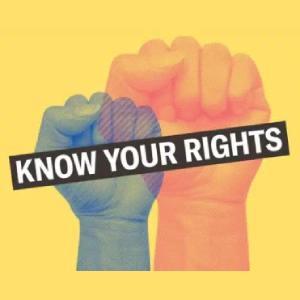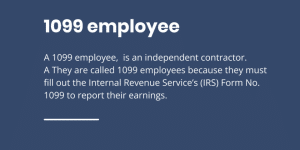Updated July 4, 2025
Understanding Disciplinary Action at Work in California
Disciplinary action in the workplace is a critical aspect of maintaining a safe and productive environment. In California, employers must navigate a complex landscape of laws and regulations when it comes to employee discipline. This article aims to provide a thorough understanding of disciplinary procedures, employee rights, and the legal framework surrounding these issues in California.
The Importance of Disciplinary Procedures
Disciplinary procedures are essential for ensuring that employees adhere to workplace standards. They serve to clarify expectations, promote accountability, and protect both employees and employers. A well-structured disciplinary process can lead to improved workplace morale, reduced turnover, and enhanced productivity.
Key Objectives of Disciplinary Procedures
- Consistency: Ensuring that all employees are treated fairly and equitably.
- Clarity: Clearly outlining the expectations and consequences of misconduct.
- Documentation: Maintaining accurate records of disciplinary actions to protect against potential legal claims.
- Improvement: Providing employees with opportunities to correct their behavior before more severe actions are taken.
California Law and Disciplinary Actions
In California, there are no specific laws mandating formal employee write-ups. However, employers must adhere to certain guidelines when documenting performance issues or disciplinary actions. Understanding these guidelines is crucial for both employers and employees.
At-Will Employment
California operates under the at-will employment doctrine, which allows employers to terminate employees for any reason, as long as it is not illegal or discriminatory. This means that while employers have the right to discipline employees, they must do so within the bounds of the law.
Documentation Guidelines
When documenting disciplinary actions, employers should follow these guidelines:
- Accuracy: Ensure that all documentation is based on objective facts rather than hearsay.
- Timeliness: Document issues as soon as they arise to maintain credibility.
- Employee Response: Allow employees the opportunity to respond to any documentation regarding their performance.
- Confidentiality: Keep all documentation confidential and share it only with those who need to know.
Types of Disciplinary Actions
Disciplinary actions can vary in severity, depending on the nature of the misconduct. Here are some common types of disciplinary actions that employers may implement:
Informal Warnings
Informal warnings are often the first step in addressing minor misconduct. These may include verbal warnings or informal discussions about an employee’s behavior. The goal is to correct the issue without resorting to formal procedures.
Formal Warnings
If informal warnings do not lead to improvement, employers may issue formal warnings. This process typically involves a written notice outlining the specific issues and the expected corrective actions. Employees should be informed of their right to appeal any formal warnings.
Suspension
In cases of serious misconduct, employers may choose to suspend an employee. Suspension can be with or without pay, depending on the circumstances. This action allows the employer to investigate the situation further while removing the employee from the workplace temporarily.
Termination
Termination is the most severe form of disciplinary action and should only be considered after all other options have been exhausted. Employers must ensure that the termination is justified and well-documented to avoid potential legal repercussions.
Employee Rights During Disciplinary Actions
Employees have specific rights when facing disciplinary actions in California. Understanding these rights is crucial for navigating the disciplinary process effectively.
Right to Representation
Employees have the right to be accompanied by a union representative or a coworker during disciplinary meetings. This ensures that employees have support and can present their case effectively.
Right to Appeal
Employees have the right to appeal any disciplinary action taken against them. This process typically involves submitting a written appeal to the employer, outlining the reasons for the appeal and any supporting evidence.
Protection Against Retaliation
California law protects employees from retaliation for exercising their rights. This means that if an employee files a complaint or participates in an investigation, they cannot be subjected to adverse actions as a result.
Creating an Effective Disciplinary Action Plan
Employers should develop a comprehensive disciplinary action plan to ensure consistency and fairness in handling employee misconduct. Here are some key components to consider:
Clear Policies and Procedures
Establish clear policies outlining the expectations for employee behavior and the consequences for violations. These policies should be communicated to all employees and included in the employee handbook.
Training and Education
Provide training for managers and supervisors on how to implement disciplinary procedures effectively. This training should cover documentation practices, communication strategies, and the importance of consistency.
Regular Review and Updates
Regularly review and update disciplinary policies to ensure they remain compliant with California law and reflect best practices. This proactive approach can help prevent potential legal issues down the line.
The Role of Human Resources
Human Resources (HR) plays a vital role in managing disciplinary actions within an organization. HR professionals can provide guidance on legal compliance, documentation practices, and conflict resolution strategies.
HR’s Responsibilities
- Policy Development: Assisting in the creation and implementation of disciplinary policies.
- Training: Providing training for managers on effective disciplinary practices.
- Documentation: Ensuring that all disciplinary actions are documented accurately and stored confidentially.
- Conflict Resolution: Mediating disputes between employees and management regarding disciplinary actions.
Legal Considerations in Disciplinary Actions
Employers must be aware of the legal implications of disciplinary actions to avoid potential lawsuits. Here are some key legal considerations:
Discrimination and Harassment
Disciplinary actions must not be based on discriminatory factors such as race, gender, age, or disability. Employers should ensure that all disciplinary decisions are made based on objective criteria.
Whistleblower Protections
California law protects employees who report illegal activities or unsafe working conditions. Employers must be cautious not to retaliate against employees who exercise their whistleblower rights.
Documentation as Evidence
In the event of a legal dispute, documentation of disciplinary actions can serve as crucial evidence. Employers should maintain accurate records of all disciplinary actions, including the rationale behind each decision.
Conclusion
Understanding disciplinary action in California is essential for both employers and employees. By adhering to legal guidelines, maintaining clear policies, and fostering open communication, organizations can create a fair and productive workplace. Employees, on the other hand, should be aware of their rights and the procedures in place to protect them. If you find yourself facing disciplinary action or have questions about your rights, consider seeking legal counsel to navigate the complexities of employment law effectively.
Unfair treatment in the workplace can take many forms, and navigating the legal landscape can be challenging. However, understanding your rights and the steps involved in pursuing a lawsuit can empower you to take action. If you believe you have experienced unfair treatment, consult with a knowledgeable employment law attorney to explore your options and determine the best course of action.







